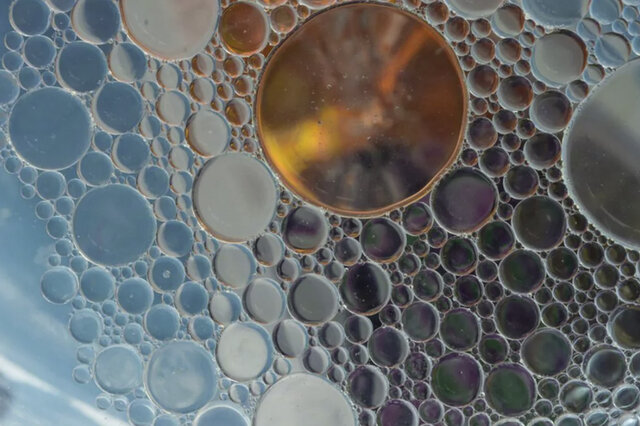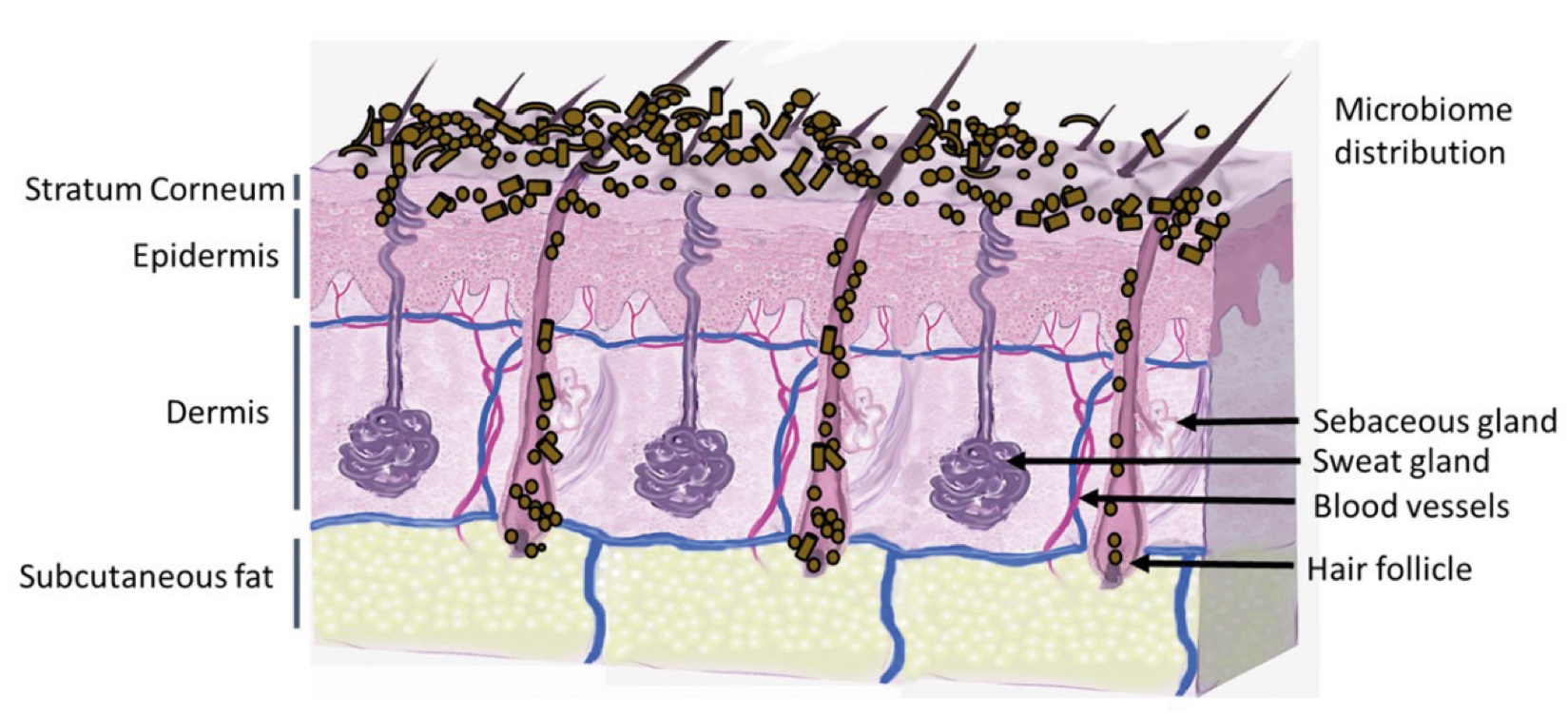
Mental Wellness
Skin care
peer-reviewed
The future of skincare is bright - and consumers are, too
CAROLE GHERARDI
Personal Care, Health & Biosciences, IFF, Geneva, Switzerland
ABSTRACT:The skincare industry is poised to surpass $180 billion by 2025. Highly informed consumers, or "skintellectuals," are reshaping the market. These ingredient-savvy shoppers aren’t just interested in the efficacy of products but the psychological benefits of skincare as part of self-care routines, too. This holistic approach to well-being is becoming increasingly important. WGSN's Future of Skincare 2027 report highlights a remarkable 188% increase in global online searches for the keyword "ceramide moisturizer," reflecting the growing consumer interest in ceramides and the underlying behaviors driving the trend. This analysis offers valuable insights for brands aiming to connect with today's discerning skincare enthusiasts.
??????????????????
“
“A study in healthy women providing probiotic yogurt for four weeks showed an improvement in emotional responses as measured by brain scans”

Figure 1. Skin Section with Microbiome. Most microorganisms live in the superficial layers of the stratum corneum and in the upper parts of the hair follicles. Some reside in the deeper areas of the hair follicles and are beyond the reach of ordinary disinfection procedures. There bacteria are a reservoir for recolonization after the surface bacteria are removed.
Materials and methods
Studies of major depressive disorder have been correlated with reduced Lactobacillus and Bifidobacteria and symptom severity has been correlated to changes in Firmicutes, Actinobacteria, and Bacteriodes. Gut microbiota that contain more butyrate producers have been correlated with improved quality of life (1).
A study in healthy women providing probiotic yogurt for four weeks showed an improvement in emotional responses as measured by brain scans (2). A subsequent study by Mohammadi et al. (3) investigated the impacts of probiotic yogurt and probiotic capsules over 6 weeks and found a significant improvement in depression-anxiety-stress scores in subjects taking the specific strains of probiotics contained in the yogurt or capsules. Other studies with probiotics have indicated improvements in depression scores, anxiety, postpartum depression and mood rating in an elderly population (4-7).
Other studies have indicated a benefit of probiotic supplementation in alleviating symptoms of stress. In particular, researchers have looked at stress in students as they prepared for exams, while also evaluating other health indicators such as flu and cold symptoms (1). In healthy people, there is an indication that probiotic supplementation may help to maintain memory function under conditions of acute stress.
Introduction
Skincare continues to be the powerhouse of the Beauty sector. Fueled by increasing consumer awareness and demand for high-quality, effective products, global sales are set to surpass $180 billion. WGSN’s latest Future of Skincare report notes that global online searches for “ceramide moisturizer” have surged by 188% (1). With search engines and social media driving new levels of interest and engagement, why are ceramides capturing so much attention?
Growing awareness of skincare ingredients
In recent years, the skincare industry has undergone a transformation. Consumers are now significantly more informed and discerning, seeking skincare solutions that enhance their appearance while contributing to their overall well-being and the environment.
One of the key drivers of this trend is increasing awareness of the ingredients used in skincare products:
- 52% of consumers actively seek products with recognizable ingredients (2);
- 41% of brand-loyal consumers cite product quality and effectiveness as the primary reasons for their loyalty (2);
- 52% ranked active ingredients highest in skincare priorities (1).
This elevated awareness has given rise to a new class of curious consumers. “Skintellectuals” are passionate about understanding the ingredients in their products and how they work to improve the health and appearance of their skin. They prioritize transparency and efficacy, often researching formulations to ensure they align with their values and needs. This tells us that consumers are not just looking for products that work, but ones that contain ingredients they trust and understand, too.
What are skintellectuals learning?
Inquisitive skintellectuals are discovering that ceramides are naturally occurring lipids that help moisturize and strengthen the skin barrier. Ceramides are primarily found in the stratum corneum, the outermost layer of the epidermis. This layer is composed mainly of corneocytes and intercellular lipids, including ceramides. Ceramides are the major lipid constituent of lamellar sheets in the intercellular spaces of the stratum corneum. They play a crucial role in structuring and maintaining the skin’s water permeability barrier, forming ordered structures with other lipids to keep the skin hydrated and protected. Ingredients like ceramides reinforce the skin barrier to prevent water loss, dehydration, and the penetration of harmful substances. CeraVe from L’oreal and Estee Lauder are leading brands using ceramides.
Replenishing essential lipids to restore the skin's natural barrier is one of the four key moisturization strategies, along with:
- Occlusion: This strategy involves creating a physical barrier on the skin's surface to prevent water loss. Ingredients like petrolatum, mineral oil, and silicones are commonly used in occlusive moisturizers. These ingredients form a protective layer that traps moisture in the skin, making them particularly effective for very dry or compromised skin.
- Humectancy: Humectants are ingredients that attract water from the environment and the deeper layers of the skin to the surface. Common humectants include glycerin, hyaluronic acid, and natural betaine. These ingredients help to keep the skin hydrated by drawing moisture into the outer layers, making them ideal for all skin types, especially dehydrated skin.
- Osmoprotection: This strategy involves using ingredients that help the skin cells to maintain their water balance under stress conditions, such as extreme temperatures or pollution. Natural betaine is an example of an osmoprotectant that helps to protect the skin's cells from dehydration and environmental stressors.
With consumers prioritizing the health of their skin, and the concept of a healthy skin barrier gaining prominence, skintellectuals are increasingly aware that maintaining this barrier is essential for overall skin health. This is prompting brands to focus on formulations that support barrier function.
However, brands can also look beyond ceramides to other active ingredients, such as natural betaine or urea. Natural betaine can act on multiple moisturization strategies, providing benefits like hydration, and protection against environmental stressors, in addition to reinforcement of the skin barrier.
Unlike ceramides, betaine acts in the stratum granulosum, specifically at the tight junctions in the second layer of this stratum. Tight junctions are intercellular junctions that restrict the passage of substances such as water and larger molecules. Betaine helps reinforce these tight junctions, further enhancing the skin’s barrier function by preventing the loss of moisture and protecting against external irritants.
In fact, ceramides and betaine can work together to fortify the skin barrier by acting at different layers of the epidermis simultaneously. Product ranges, like Ceramidin from Dr.Jart+, contain both betaine and ceramides. This multifaceted approach helps deliver the efficacy that consumers desire.
Skincare = self-care
As the largest organ in the body, our skin plays a crucial role in protecting us from external factors while maintaining optimal water balance. When the skin barrier is compromised, it can lead to dryness, flakiness, and other issues. So, skintellectuals are making the connection between skincare and self-care.
As part of a holistic approach to well-being, the integration of skincare into daily self-care routines has become more prevalent. In Italy, 79% of women who use cleansing or caring products on their face think their routine helps them relax and relieve stress (3), while 54% of Canadians use beauty/grooming products to feel good about themselves (4).
This underscores the psychological benefits of skincare, making it an essential part of self-care and mental well-being. The ritual of applying skincare products can serve as a moment of mindfulness, where individuals can reconnect with themselves amidst their busy lives.
A cycle of wellbeing
These two intersecting trends —skintellectuals and self-care — are mutually reinforcing. When you prioritize care for your skin, you naturally seek out more information. The quest for knowledge increases awareness of the ingredients that benefit your skin which, in turn, enhances your ability to care for it effectively. This cycle of informed decision-making and self-care creates a transformative skincare experience that emphasizes mindfulness, informed choices, and a holistic approach.
As consumers become more discerning, they seek products that not only enhance their appearance but also align with their values and wellbeing. In this evolving landscape, science-backed, solution-driven products are poised to dominate the market. The shift is fueled by a growing demand for formulations that harmonize with the skin’s natural functions, addressing needs on both a surface and cellular level. By prioritizing efficacy and transparency, brands can foster deeper connections with consumers, ultimately elevating the entire skincare journey.
In today’s fast-paced world, skincare routines have evolved beyond their primary function of maintaining healthy skin. They have become an integral part of self-care practices, offering a chance to slow down and focus on yourself. Engaging in a skincare routine can be soothing ritual that provides a sense of calm and relaxation.
Looking ahead, the skincare industry is set to innovate with new ingredients and formulations that simplify routines while still delivering effective results. Upcoming innovations include multi-functional products that combine several benefits in one, reducing the number of steps in a skincare routine without compromising on efficacy. Sensory experiences are also being enhanced to promote relaxation and wellbeing, with products that offer soothing textures, calming scents, and pleasant application techniques. These innovations cater to the needs of modern consumers while elevating the overall skincare experience to make it more enjoyable and beneficial.
Ultimately, the surge in interest in ceramide moisturizers and other advanced skincare products is a reflection of broader trends in the beauty industry. Consumers are more knowledgeable and demanding than ever, seeking products that deliver real results while supporting their overall health and wellness. Brands that can meet these expectations with innovative, effective, and transparent formulations are well-positioned to thrive in this dynamic market.
Conclusion
The future of cosmetics lies in the continued evolution of holistic approaches which represents a transformative shift in the industry, merging scientific advancements, natural ingredients, and wellness principles. By understanding and embracing the interconnectedness of these elements, the cosmetics industry can cultivate products that not only enhance external beauty but also contribute to the overall well-being of individuals and the planet.
The interplay between beauty from within and topical cosmetics is the key for future products. The integration of biotechnology and green chemistry is revolutionizing cosmetic formulations, offering sustainable and biocompatible alternatives.
Developers can implement blockchain to trace the journey of ingredients from source to product. Nevertheless, the efficacy of the natural products should be scientifically proven. Marketers can communicate transparency as a brand value, and parallelly educate consumers by highlighting how specific ingredients contribute to radiant and healthy skin.
By embracing the synergy between these approaches and leveraging scientific advancements, the cosmetics industry can provide consumers with comprehensive beauty solutions that cater to both internal and external dimensions of beauty.
Surfactant Applications

The application area lends itself particularly well to the use of AI. Active today in this area is the US company Potion AI (6). The company provides AI-powered formulation tools for beauty and personal care R&D. Their offerings include Potion GPT, next generation ingredient and formula databases and AI document processing. Potion’s work could have a significant impact on the entire surfactant value chain, from raw material suppliers to end consumers. By using their GPT technology, they can help target work toward novel surfactant molecules that have optimal properties for specific applications. By using their ingredient and formula databases, they can access and analyze a vast amount of data on surfactant performance, safety, and sustainability. By using their AI document processing, they can extract and organize relevant information from patents, scientific papers, and regulatory documents. These capabilities could enable Potion AI's customers to design and optimize surfactant formulations that are more effective, eco-friendly, and cost-efficient. A particularly interesting application for this type of capability is deformulation.
Deformulation is the process of reverse engineering a product's formulation by identifying and quantifying its ingredients. Deformulation can be used for various purposes, such as quality control, competitive analysis, patent infringement, or product improvement. However, deformulation can be challenging, time-consuming, and costly, as it requires sophisticated analytical techniques, expert knowledge, and access to large databases of ingredients and formulas.
AI can potentially enhance and simplify the deformulation process by using data-driven methods to infer the composition and structure of a product from its properties and performance. For example, AI can use machine learning to learn the relationships between ingredients and their effects on the product's characteristics, such as color, texture, fragrance, stability, or efficacy. AI can also use natural language processing to extract and analyze information from various sources, such as labels, patents, literature, or online reviews, to identify the possible ingredients and their concentrations in a product.

Figure 2. Skin Section with Microbiome. Most microorganisms live in the superficial layers of the stratum corneum and in the upper parts of the hair follicles. Some reside in the deeper areas of the hair follicles and are beyond the reach of ordinary disinfection procedures. There bacteria are a reservoir for recolonization after the surface bacteria are removed.
References and notes
- Sienna Piccioni, 2024, Future of Skincare 2027, WGSN. Accessed online: https://www.wgsn.com/beauty/article/65eeca8259dcb24e81d58637
- Samruddhi Yardi, 2024, Skincare Multistep Routines and Personalized Solutions Gaining Popularity, Market.Us Media. Accessed online: https://media.market.us/skincare-multistep-routines-and-personalized-solutions-gaining-popularity/
- Grace Alexander, 2022, A Year of Innovation in Facial Skincare, Mintel. Accessed online: https://clients.mintel.com/content/report/a-year-of-innovation-in-facial-skincare-2022
- Meghan Ross, 2021, Increased prioritization of mental wellbeing has 54% of Canadians using beauty/grooming products to feel good about themselves, Mintel. Accessed online: https://www.mintel.com/press-centre/increased-prioritization-of-mental-wellbeing-has-54-of-canadians-using-beautygrooming-products-to-feel-good-about-themselves/
